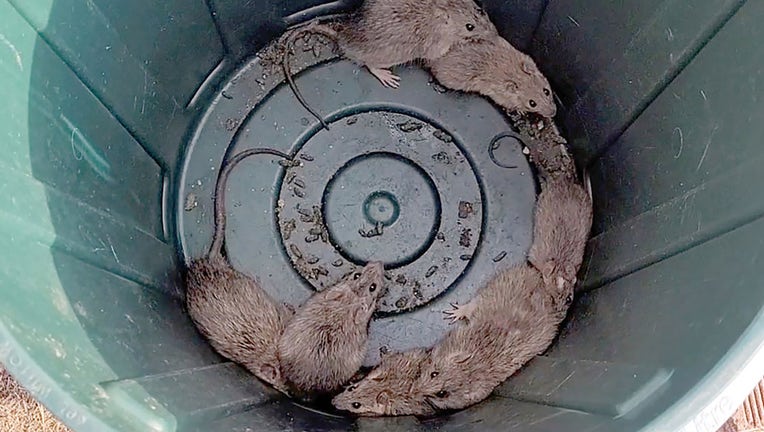Thousands of dead and dying rats wash up on shores of Australian coastal town

This frame grab taken from video footage by Derek Lord on November 23, 2023 via AFPTV shows native long-haired rats trapped in a rubbish bin in the Queensland town of Normanton, after a bumper wet season in inland Australia. The native long-haired ra
KARUMBA, Australia - Residents of a small Australian coastal town are dealing with thousands of dead and dying rats washing up on area beaches, according to reports.
The rats have recently descended on the fishing town of Karumba, located in the Australian state of Queensland, and are part of an ongoing plague of rats impacting the region after a heavy wet season, experts say.
"When the moon came over the town last night, the river was well and truly alive with the bodies of rats," commercial fisherman Brett Fallon told local news outlet ABC North West Queensland.
Fallon added that his boat was being infested by "at least 100 rats a night."
Videos and images posted on social media show what appear to be piles of dead or dying rats washing up on the shore and at the edge of boat ramps.
A fishing charter owner told ABC North West Queensland that she’s had to fight off rats trying to climb into her boats.
"They swim out to the sandbanks at low tide and when the water comes up, they drown and their bodies are washed back onto the beach," fishing charter owner Jemma Probert told the news outlet.
"We had to keep flicking them off," Probert added.
Karumba is the latest area that has been hit by the native long-haired rats infesting parts of outback Queensland since the summer, according to ABC North West Queensland.
Rats have chewed through cars, homes and businesses in other Queensland communities, and even contaminated important water sources and destroyed crops, the news outlet reported.
Prof Peter Banks, a rodent expert from the University of Sydney, told the Guardian Australia that the long-haired rat is nicknamed "the plague rat" for obvious reasons.
"They call it the plague rat because they periodically undergo very big increases in abundance," Banks told the Guardian. "They’ve got very high reproductive rates … so when big rain falls in arid environments, which is their natural habitat, they increase."

Videos show rats in Family Dollar distribution facility: Arkansas AG
Attorney General Leslie Rutledge shared videos recorded of rats inside a Family Dollar distribution facility. In one, an ex-worker is trying to feed a potato chip to a large rat sitting on a stack of boxes.
There’s an 80% chance of a rat plague after rainfall of 750 ml (or roughly 25 fluid ounces), according to Banks. In very dry areas, these scenes only happen once a decade, Banks added.
"What we’re seeing now is the natural result of too many rats – not enough food, not enough space – in the wrong place," Banks told the Guardian.
In 2021, Australia’s New South Wales state was similarly threatened by a mouse plague that the state government described as "absolutely unprecedented."
This story was reported from Cincinnati.

